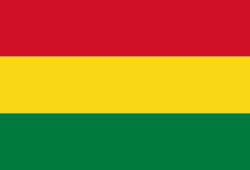Executive Secretary

IV International Conference on Sustainable Energy Development
CIDES 2025
Bolivia has diverse topographical features, including areas with high potential for the installation of hydroelectric plants. The country has two major water systems: the macro basin of the Bolivian Amazon, with a potential of 34,208 MW, and the macro basin of La Plata with 5,359 MW [1], values that exceed the current national demand. However, Bolivia is undergoing a transition and diversification of its energy matrix by incorporating renewable energy sources, including solar and wind power. [2]
The objective of this study is to implement a continuous daily hydrological modeling system for the macro basin of the Bolivian Amazon. This tool aims to support the development of hydroelectric projects by providing the necessary information regarding water availability in the area, while taking into account environmental considerations and ecosystem preservation.
The WEAP (Water Evaluation and Planning) software was used, employing the Soil Moisture Method (Precipitation-Runoff) for the modeling period from 1980 to 2020, based on meteorological grid information from the Surface Water Balance of Bolivia [3].
Secondary information on land use and land type was utilized for parameterization. Climatological data were extracted from GMET [4]. The hydrological model was spatially and temporally rescaled for four priority areas (hydroelectric and multipurpose systems).
For calibration, measured (observed) flows from existing hydrometric stations in the Rurrenabaque and Gundonovia sub-basins were used. The quantitative statistical analysis of the hydrological modeling of the sub-basins yielded percentage bias (PBIAS) values of ±10% and Nash-Sutcliffe Efficiency (NSE) values of >0.64, with a ratio of the root mean square error to the standard deviation of the measured data (RSR) ≤ 0.60, classifying the model's performance as good to very good [5].
Las características topográficas de Bolivia muestran que esta región tiene un gran potencial para la generación hidroeléctrica, ya que está compuesta por dos grandes sistemas hídricos, como son la macro cuenca de la Amazonía boliviana cuyo potencial es de 34.208 MW y La Plata con 5.359 MW [1], superando la demanda nacional actual. Sin embargo, Bolivia está cambiando su matriz energética incorporando fuentes de energía renovables.
El objetivo del estudio es la implementación de un sistema de modelación hidrológica continua a nivel diario que parte de la macro cuenca de la Amazonía Boliviana, esta herramienta tiene como finalidad coadyuvar aún más en el desarrollo de proyectos hidroeléctricos, brindando la información necesaria respecto a la disponibilidad de agua, tomando en cuenta el medio ambiente y la preservación del ecosistema.
Para ello se ha utilizado el software WEAP, que incluye el Método de Humedad del Suelo (Precipitación-escorrentía) para el periodo 1980-2020, estando basado en la grilla meteorológica del Balance Hídrico Superficial de Bolivia [2].
La parametrización se realizó a partir de información secundaria de uso y tipo de suelo. La información climatológica fue extraída del GMET [3] El modelo hidrológico fue reescalado espacial y temporalmente para cuatro áreas prioritarias (sistema hidroeléctrico y multipropósito).
La calibración se realizó con los caudales medidos (observados) de las estaciones hidrométricas existentes en las subcuencas de Rurrenabaque y Gundonovia. El análisis estadístico cuantitativo de la modelación hidrológica de las subcuencas arrojó valores de sesgo porcentual (PBIAS) y eficiencia de Nash-Sutcliffe (NSE) < ±10% y > 0.64 respectivamente, y relación entre el error cuadrático medio y la desviación estándar de los datos medidos (RSR) ≤ 0.60 lo que clasifica su desempeño del modelo entre bueno y muy bueno [4]
About The Speaker

Ing. Roxana Guillen

Discussion






